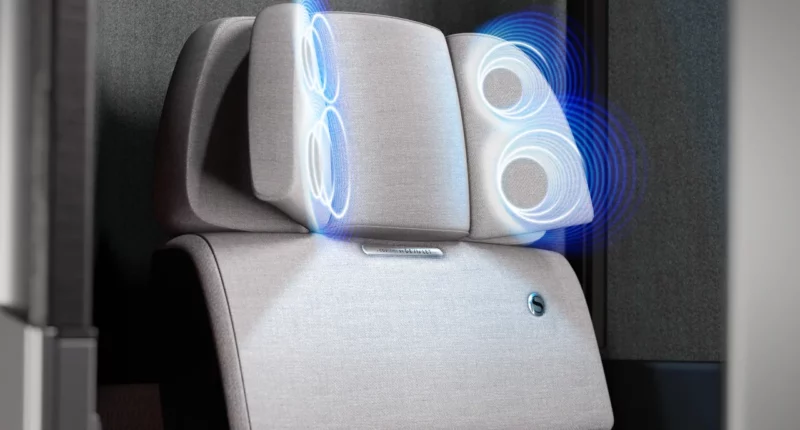For the past five years, the buzz in business class has revolved around privacy. Airlines have taken heed of passengers’ desire for seclusion and, in collaboration with seat designers and manufacturers, introduced a new breed of business class seat: the enclosed mini-suite.
If you haven’t experienced it, these mini-suites come with sliding doors that create a private space within the cabin. While crew members can still see passengers, the doors offer a secluded haven, allowing travelers to work or relax away from prying eyes.
Initially, a handful of airlines resisted this trend, but even the skeptics have embraced it. For instance, Virgin Atlantic, once championing a “social airline” concept sans doors, has now incorporated them into its latest Airbus A330neo cabin.
However, there’s a catch: these doors are heavy, complex, and demand significant space, along with stringent safety certifications. Matt Round, chief creative officer at aviation design firm Tangerine, advocates for a door-less approach, freeing up space for innovative design elements.

So, what’s the next step for business class? Chris Brady, founder of seatmaker Unum, emphasizes a shift toward minimalism, striving to reduce weight and meet sustainability goals by moving away from clunky features.
While the door mechanism is a safety requirement, the industry anticipates “Doors 2.0,” exploring alternative privacy options. KLM’s recent business class seat integrates a retractable privacy screen, offering a practical alternative to heavy doors.
Looking ahead, advancements in business class aren’t just about physical comfort; they’re about sensory experiences. Daniel Baron, managing director of LIFT Aero Design, anticipates upgrades in lighting, audio integration, and innovative textures that create a more soothing environment.
These innovations extend to subtle changes in ambient lighting to aid passengers in adjusting to different phases of flight, potentially reducing jetlag. Moreover, seating mechanisms are evolving to provide micro-adjustments for enhanced comfort during long flights.
The future promises zero-gravity seats that cradle passengers akin to astronauts, offering unparalleled comfort. Temperature control akin to luxury cars is also on the horizon, appealing to travelers seeking a more personalized experience.
As technology and passenger demands evolve, airlines strive to personalize onboard experiences while navigating the challenges of larger cabins and maintaining passenger-to-crew ratios. The focus is on providing more choices and unique options in meals, entertainment, and amenities.
As the business class experience grows complex, airlines must navigate not only technical aspects but also human psychology to cater to the ever-changing needs of their passengers.




